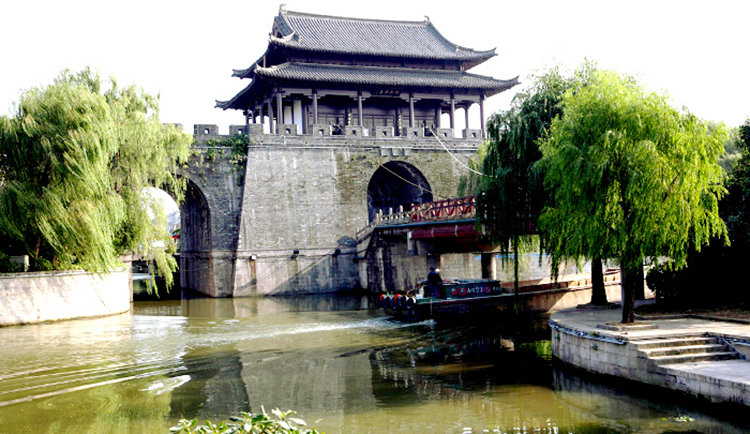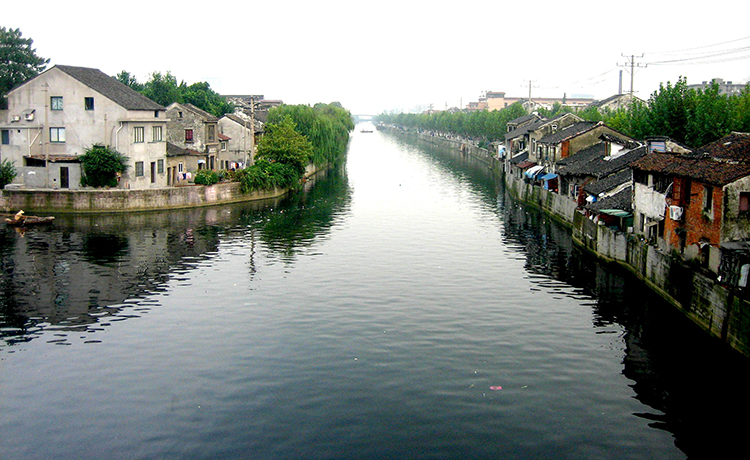Written by: Xinhua News
Posted on: September 01, 2015 | 
A view of the Grand Canal passing through the city of Hangzhou
The Silk Road was jointly submitted by China, Kazakhstan and Kyrgyzstan. It is world-famous as a corridor for trade and cultural transmission between Asia and Europe. This is the first time China has cooperated with foreign countries for a World Heritage nomination.
The Grand Canal dates back 2,400 years. With a length of 1,794 kilometers, it’s the longest man-made waterway in the world that is still in use. The heritage site consists of five sections of the Grand Canal across six provinces and two municipalities in China, linking Hangzhou to the capital, Beijing.

Including these two sites, China has 47 UNESCO World Heritage areas, the world's second largest number after Italy.
Built in 486 B.C., the 1,011 km Grand Canal is the largest civil engineering project before the Industrial Revolution, revealing the exceptional hydro-techniques and operating capabilities of the Oriental civilization, according to the evaluation of the UNESCO World Heritage Committee. The committee described the heritage in its decision as the following:
“The Grand Canal is a vast waterway system in the north-eastern and central-eastern plains of China, running from Beijing in the north to Zhejiang province in the south. Constructed in sections from the 5th century BC onwards, it was conceived as a unified means of communication for the Empire for the first time in the 7th century AD (Sui dynasty). This led to a series of gigantic construction sites, creating the world’s largest and most extensive civil engineering project prior to the Industrial Revolution. It formed the backbone of the Empire’s inland communication system, transporting grain and strategic raw materials, and supplying rice to feed the population. By the 13th century, it consisted of more than 2,000 km of artificial waterways, linking five of China’s main river basins. It has played an important role in ensuring the country’s economic prosperity and stability, and is still in use today as a major means of communication.”

As the oldest and longest and largest-space-covered man-made waterway in the world, the Grand Canal has a history of over 1,600 years. The application work started in December 2006, and it took 8 years of preparation before it was successfully listed. There are three major branches of the Grand Canal; the Sui-Tang Time Grand Canal with ancient City Luoyang as the centre, the Beijing-Hangzhou Grand Canal during the Yuan, Ming and Qing dynasties, and Zhedong Canal which flows into the sea in Ningbo, where it linked with the Sea Silk Road. The total length is about 1,011 kilometers, and it covers the area of 8 provinces, including 27 cities and 58 relic sites of China. The Grand Canal is described as the most influential waterway in the world in “the List of Ancient Canals of the World” by the International Industry Heritage Protection Committee
Different from any ancient architecture and relic sites, the Grand Canal is a cultural heritage that is still in use and is still an important communication and hydro-junction of China. It benefits 15% of the country’s population now. According to Yangzi Evening Paper, the Jiangsu section of the Grand Canal is the most important one for shipping, which consists of South Jiangsu Canal and North Jiangsu Canal divided by the Yangtze River. The former is a main waterway for the shipping of building materials, while the latter is a major waterway for coal shipping. The recent annual volume of goods transported amounts to 120 million tons, out of which the amount of coal is more than 75 million tons.
Many scholars emphasize that an important purpose of heritage application is to protect them. Liu Qingzhu, director of the Academic Committee of the Archeology Institute of the Chinese Academy of Social Sciences, saw both historical and realistic significance in the preservation of the relic site. He said, “History is the memory of a nation, and as the Grand Canal was successfully listed as a world heritage, we must do our best to protect it. Dong Bing, Chief of the Grand Canal World Heritage Application Office, said that the inscription is "a solemn promise to protect the canal not just for the Chinese, but the whole world."
You may also like: